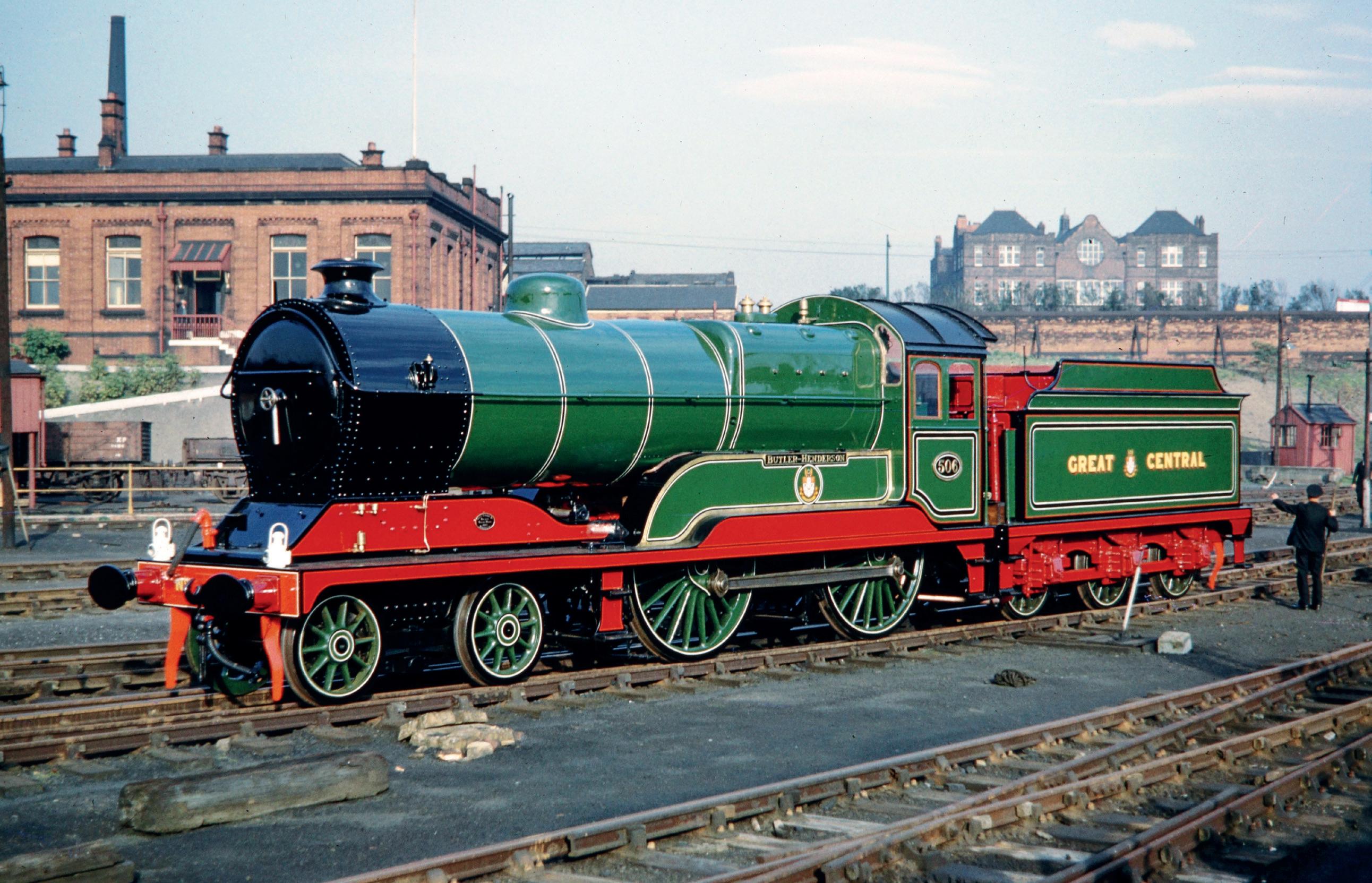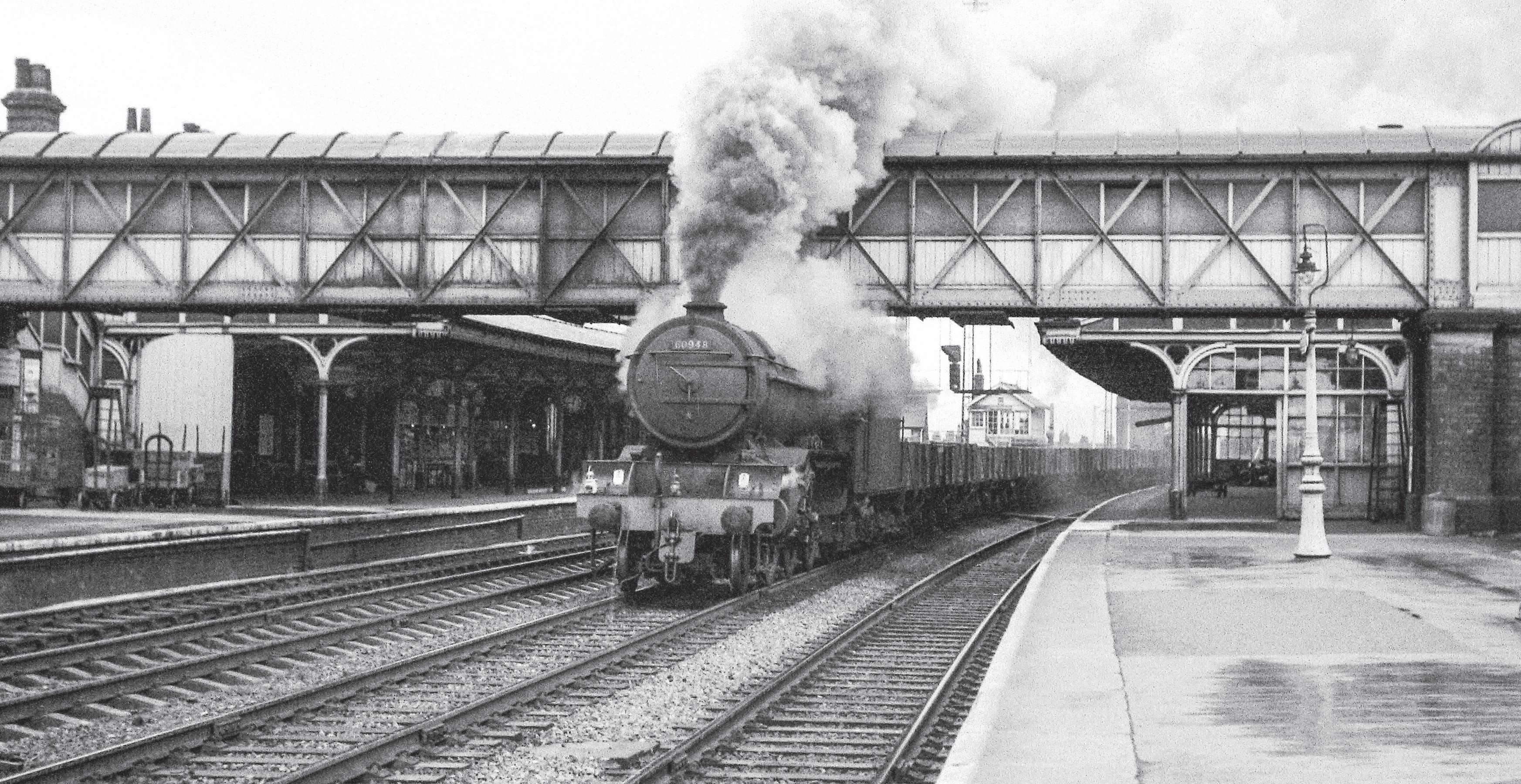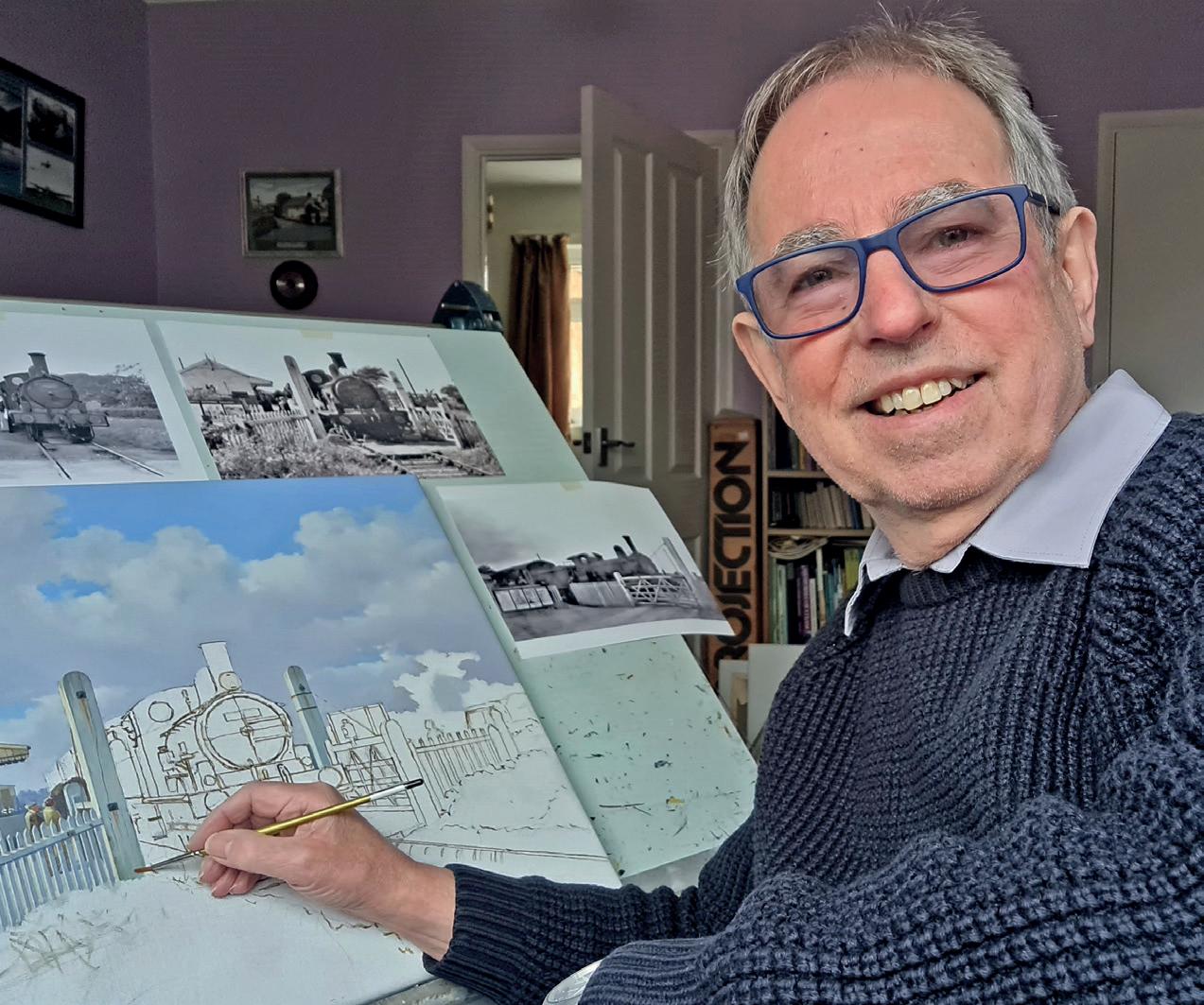EASTERN TIMES

The new history periodical for students of the BR(E), BR(NE), LNER and pre-grouping constituents
ISSUE NO. 5 • OCTOBER 2024


The new history periodical for students of the BR(E), BR(NE), LNER and pre-grouping constituents
ISSUE NO. 5 • OCTOBER 2024


The RCTS rail tour paused on the North London Line at Canonbury where the platform ashes may have come from freight locomotives. The engine looks immaculate. Designed by Alfred John Hill of the GER, his five-sided spectacle plates are a lovely touch. The enthusiasts are smartly dressed, intrigued by something going on at wheel level. Note the far washing, hung from tenement windows in the days before tumble dryers.

Above: The rail tour reversed at East Finchley on the High Barnet branch of the Northern Line tube. The original station was on the Edgware branch of the GNR. It was rebuilt in the late 1930s with additional tracks as part of London Transport’s Northern Heights Plan, only partially completed before the war intervened. The station building was designed by Charles Holden and L. H. Bucknell in Art Deco/Streamline Moderne style.

Right: There was a change of engines at Finsbury Park, taken over by Gresley class J50 tank No. 68987.
The rail tour continued to Kings Cross, the Widened Lines, Blackfriars, Loughborough Junction, Bexleyheath, the Dartford Loop, Chislehurst and Swanley to Gravesend West, then directly back to Liverpool Street via the East London line. It was my only rail tour of the 1950s. I was primarily a lineside photographer, a walker.


2nd October 1965 • The much-photographed RCTS tour is seen arriving at New Holland Town from the Pier before heading to Barton-onHumber. BR Standard Class Britannia 70012 John of Gaunt was not the first of its type to venture onto the pier, Immingham’s stud of seven occasionally being used, especially on Sunday extras or when the local football clubs were playing each other. Photo: Paul King Collection.
10th May 1946 • This is one of my favourite photographs from my H. C. Casserley collection. Not only because it shows my favourite class of loco, the Robinson C4 Atlantic, not only because it shows beautifully the juxtaposition of the Town and Pier stations, but also because the negative was in such a poor condition that it took me two days deleting scratches, marks and lines to get it into this presentable condition. The 13.52 New Holland Pier–Cleethorpes is pulling into New Holland Town hauled by Class C4 Atlantic No. 6083. Photo: H. C. Casserley, Paul King Collection.









During the Second World War the V2s were sometimes given loads well in excess of the official maximum, particularly on evacuation and troop trains at the start of the war. This when combined with the poor maintenance standards of the locomotives and the permanent way, and the double swing link pony truck fitted, led to some incidents including derailments throughout the war, culminating into several serious accidents in 1946.
The original design was replaced with the type used on Thompson’s L1s and K1/1 designs, itself based on that used on Stanier’s 8F 2-8-0 (L.N.E.R. Class O6). By 1947, all of the V2s had their pony trucks replaced.
Concurrently with the changes being made to the Gresley A3 class in terms of the double Kylchap chimney, some V2s underwent testing with a range of blast pipe arrangements, some based on that used in the L.M.S.’ Royal Scot class. The V2s used, No. 60817 and No. 60963, did not produce the results expected and by January 1961 No. 60817 had been converted to the Kylchap cowls together with No. 60881. The improvements were impressive and a further six V2s were converted.
This improvement came quite late in the day and no more conversions happened before the first withdrawal in February 1962. Withdrawal of the entire class happened in the next four years, with No. 60831 being the last in service with British Railways, dropping its fire and being withdrawn on 6th December 1966.
Class pioneer No. 4771 Green Arrow joined Mallard in preservation and was a regular main line performer for the National Railway Museum until its withdrawal, for the last time, in 2008. At the time of writing Green Arrow is on loan to the Doncaster Museum and Art Gallery, on display alongside a fellow Doncaster built steam locomotive, Ivatt’s prototype C1 Atlantic, No. 251.
The V2 class in some L.N.E.R. secondary sources are described as one of the engine classes which “won the war”, and its annual average mileages and availability suggest that it was indeed one of the L.N.E.R.’s best performing classes. A further 66 V2s were manufactured under Edward Thompson’s auspices, the dip in overall average mileages in 1944 due in part to these examples being released to traffic during the year and therefore having less time in which to run.
Figure 4: V2 mileages and availability statistics
Although one of the classes criticised in E. S. Cox’s report, the availability of the V2 class to do work during the war

1949

was always in line with, or above, the 70% average for the entire L.N.E.R. fleet. Bearing in mind its mixed traffic role, and its versatility throughout the war, the criticism in the Cox report in relation to the V2 class should be understood in the strict context of the causes of failure within the class and not necessarily a criticism of its performances out on the road.
The excellence of the V2s during the war can perhaps be summed up with the singular exploit of No. 4800 of New England Shed on 31st March 1940. With a train of 26 vehicles, picking up the train from Peterborough to head into London, No. 4800, under the hand of its driver Mr. Hensy, took the heavy train into London and lost only nine minutes on the total schedule allotted. The gross load
Bibliography
All table and graph figures:
of the train was somewhere in the region of 850 tons, very much more than the normal stipulated maximums of the class.
Use of Engine Power document by Simon A.C. Martin. Originally published in ‘Sir Nigel Gresley: The L.N.E.R’s first C.M.E.’, available from Strathwood Publishing Limited.
Publications:
‘Locomotives of the L.N.E.R.’, Volumes 1-11, The Railway Correspondence and Travel Society (R.C.T.S.) (1963-1971).
National Archive Materials:
The L.N.E.R. Board, Emergency Board and Locomotive Committee Minutes: File RAIL 390.
The L.N.E.R. Assorted Archives (1923-1948): File RAIL 394.

Left: Malcolm Root takes a pause from one of his recent works, which depicts J15 class 0-6-0 No. 65447 at Laxfield in Suffolk with a train for the Ipswich-Norwich main line station of Haughley. The 19-mile branch line was opened in 1904 and was closed by BR in July 1952.
Below: A 2-4-2T brings warmth to Earls Colne station on the Colne Valley & Halstead Railway. The line, which ran from the Essex station of Chappel & Wakes Colne to Haverhill in Suffolk, remained independent until becoming part of the L.N.E.R. network in the 1923 Grouping. It was closed by B.R. to passengers in 1961 and to freight four years later.


Stirling Single No.1 alongside Class A4 No. 4468 Mallard which is minus its streamlining and asbestos lagging on the boiler and firebox. “I wondered if Asbestos Annie was still alive: in Doncaster Crimpsall during the war, she put the asbestos blocks on the boilers and firebox and was covered with the stuff morning, noon and night yet I dare say she lived to be a hundred for she was as tough as any man in the Crimpsall, and that is saying something.” Photo and quote: Richard H. N. Hardy © Transport Treasury.